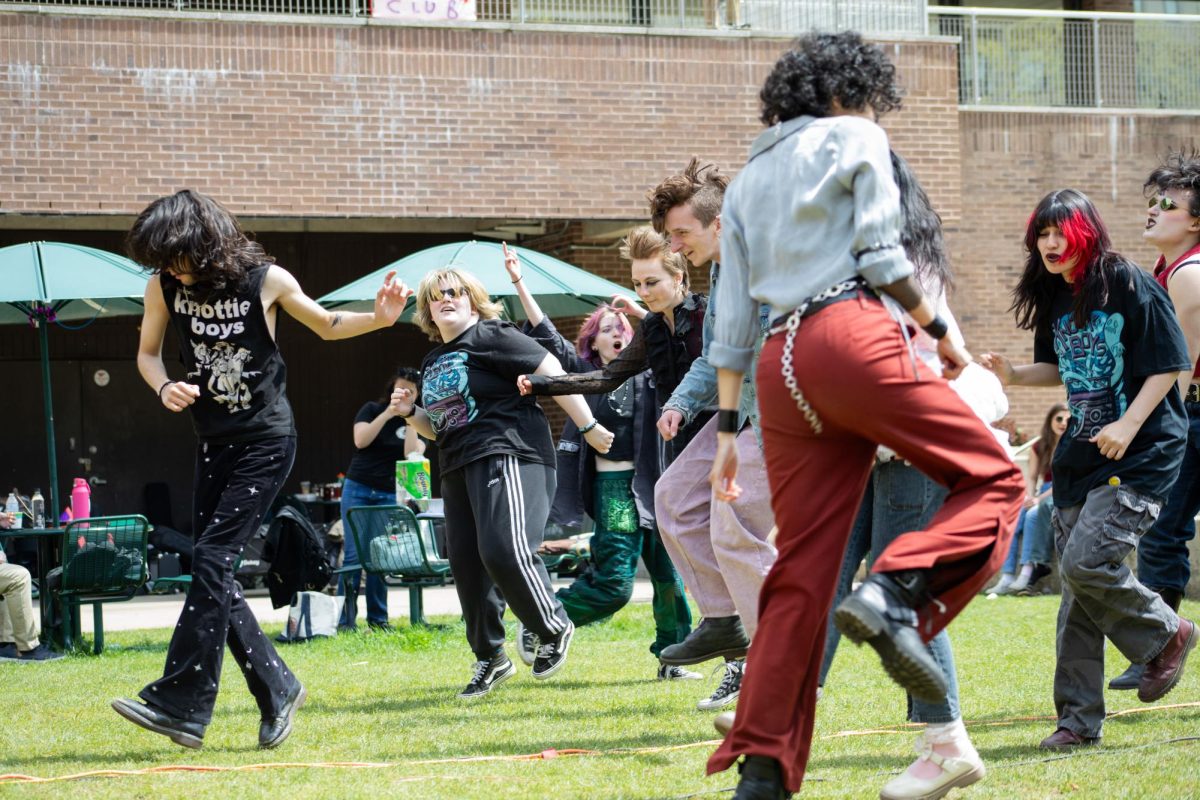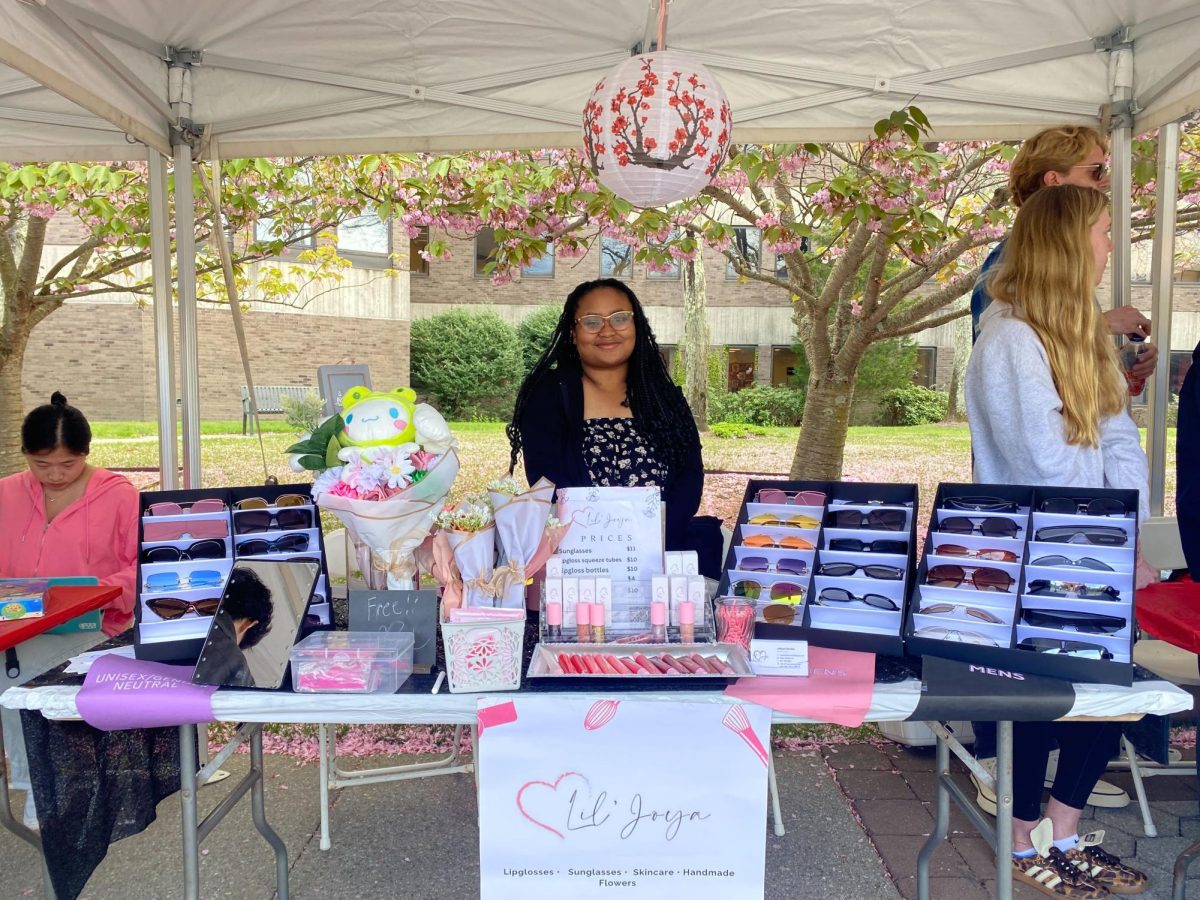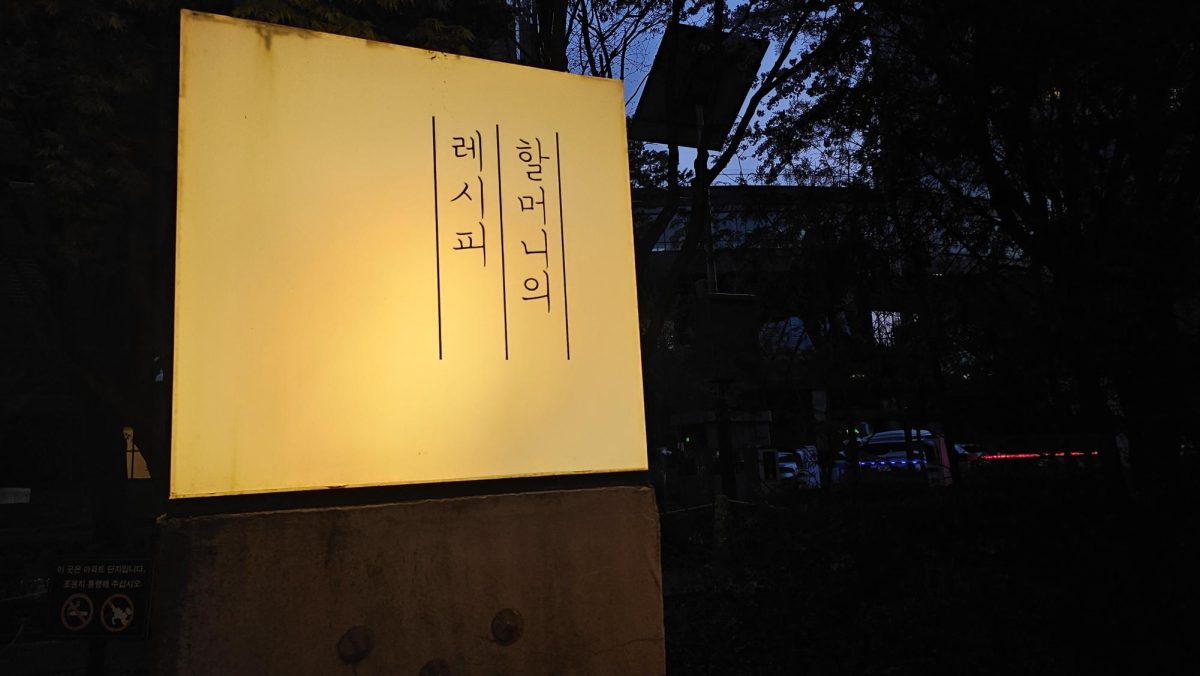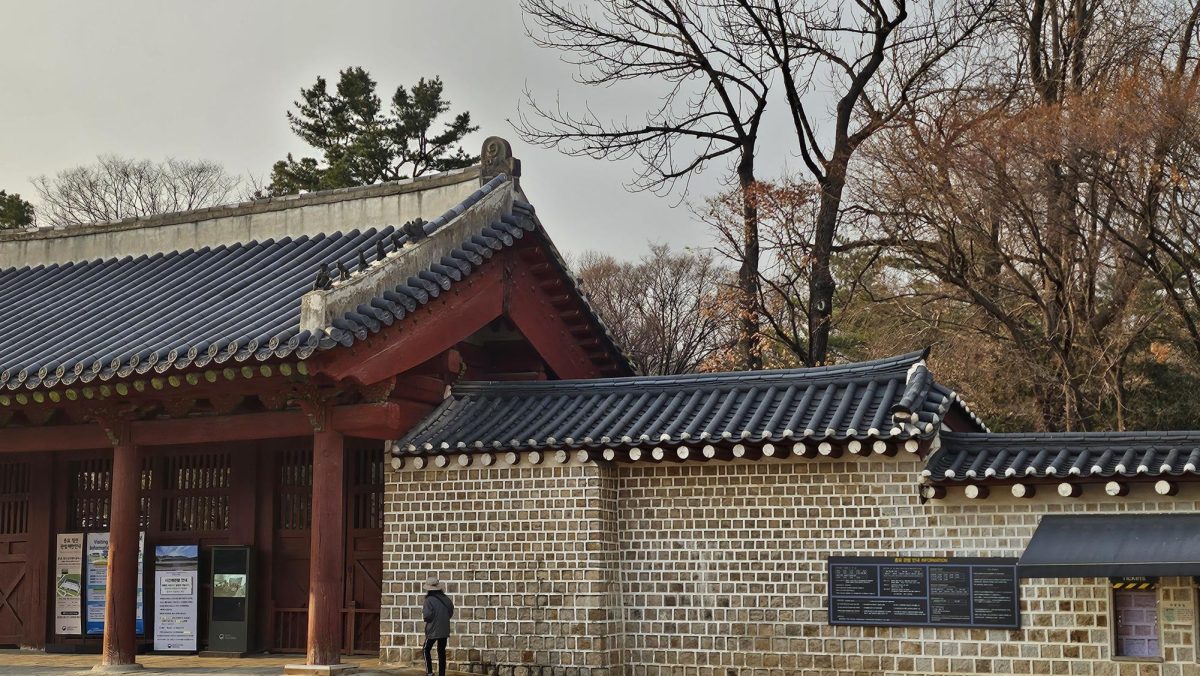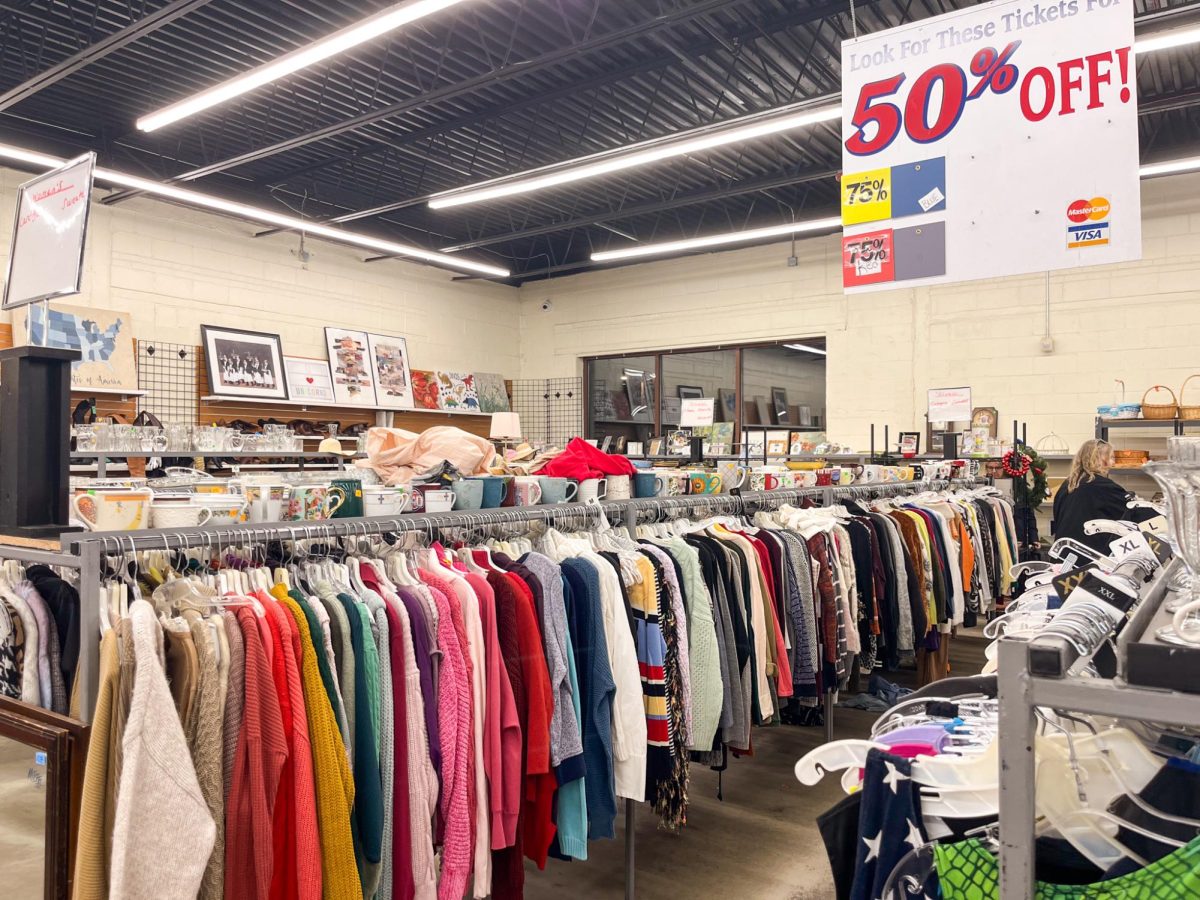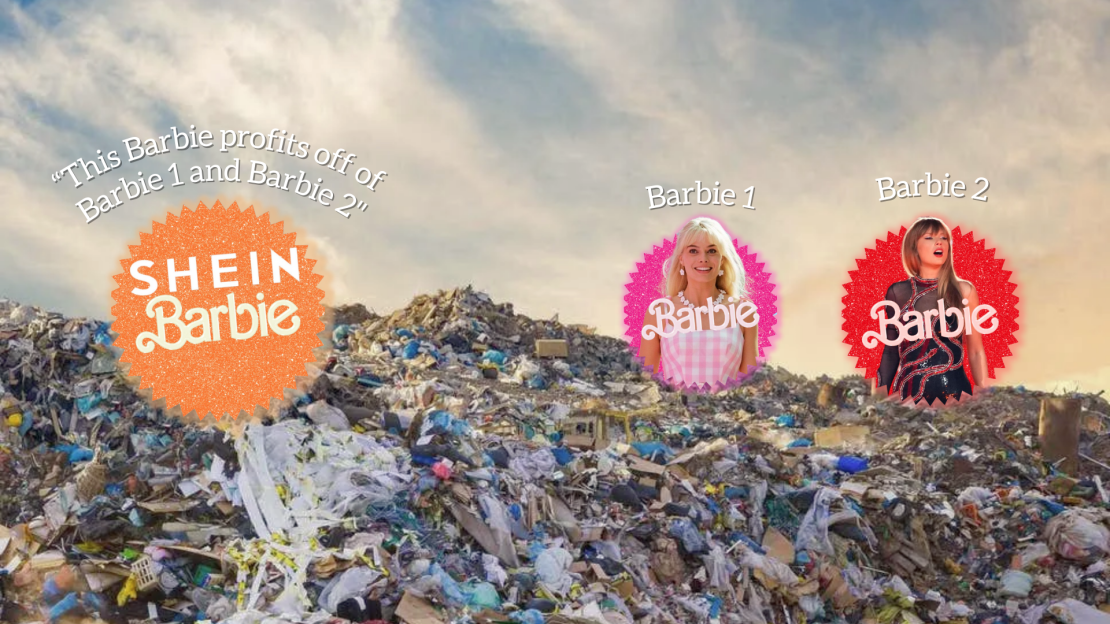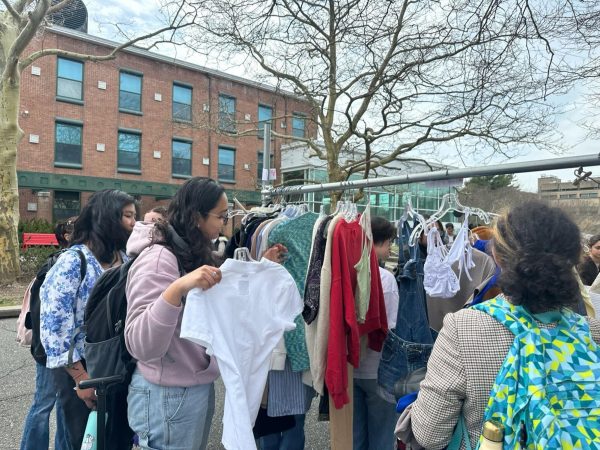
As the focus on fashion sustainability and raising awareness about clothing waste surpluses gains traction on social media and in the news, students at Stony Brook University aren’t just hitting the books; they’re actively making plans to establish pop-up thrift shops. Throughout the semester, students, clubs and organizations have been turning campus fashion on its head by hosting thrifting events to combat waste and promote sustainability.
The club Hidden Treasures has become a beacon for change. Their thrift shop initiatives not only provide students with affordable clothing options but also serve as a platform for reducing environmental impacts caused by the fast fashion industry.
Amidst the bustle of people at the Student Activities Center (SAC) Plaza, where sunlight seeps through the trees, students crowded around Hidden Treasures’ two clothing racks and a rolling cart filled with clothing on Wednesday, April 10. Their table wasn’t the only one at the flea market event they hosted; 15 other campus clubs and organizations were present and flooded with both excitement and eagerness, all rallying in favor of sustainability.
In an email to The Statesman, Saima Pasha, a senior majoring in chemistry and the secretary of Hidden Treasures, wrote about the donation process in which new clothing items that are either sold or redistributed find new lives through thrift shops or clothing swap events. All remaining items at the end of each semester are then donated to charities, extending their efforts beyond the campus.
“We receive these [clothing] donations from many students on campus that reach out to us because they are looking to get rid of items,” Pasha said. “[It] reduces unnecessary waste on campus because the items are finding a new home instead of going to the trash!”
The push for fashion sustainability isn’t Hidden Treasures’ fight alone, as other student-led projects have played a significant role in advancing sustainability efforts on campus. Bowen Cheng, the Undergraduate Student Government (USG) director of Sustainability, Operations, Infrastructure, and Livelihood, said in an interview that their “end goal is really to establish a physical facility here on campus from [and] by students.” He added that “By combining the two — casual and professional wear — we want to sort of just broaden our scope, and provide more for the students here on our campus.”
Still, it’s not just clubs and USG leading the changes; sorority organizations also promote sustainable fashion initiatives. For instance, alpha Kappa Delta Phi will host a pop-up thrift shop in the SAC Plaza on April 30.
Cheng highlighted USG’s proactive involvement in using thrift shops to combat fashion waste head-on. USG leads Wolfie’s Wardrobe, a collaboration between Seawolf Secondhand and the Center for Service Learning and Community Service’s Career Closet, which has been instrumental in reducing fashion waste in the campus community and aims to reshape the narrative of fashion excess by promoting fashion sustainability. With plans to make these efforts permanent moving forward, the University is looking to further its commitment to sustainability.
Additionally, Pasha explained that thrift shops have been Hidden Treasures’ most successful project. The flea market is a testament to Hidden Treasures’ mission: bringing together an entire campus community. It featured an Easter egg hunt with gift vouchers that included small prizes such as keychains, pins and vouchers to use at other clubs and organizations’ tables.
“After these events, we are able to reduce the amount of items we have by over half,” Pasha said. “Not only does this event help cycle items within the community again but it also raises awareness to be more sustainable. We also promote the fact that we are always taking in donations, no matter what the item is, so people know they have a place to go to if they would like to get rid of any items.”
In an email to The Statesman, Sonia Tan, a senior majoring in applied mathematics and statistics, said that she began shopping at thrift stores because she thought they would be more successful in helping her find clothes that suited her style. At one of her first thrift shop events, she found a high-quality wool blazer; she mentioned it has been a great addition to her wardrobe. Tan added that she regularly wears thrifted cardigans and sweaters.
“Buying secondhand clothing in the first place promotes sustainability! I don’t buy as much from fast fashion brands any more because the campus thrift store events are so close by and happen so frequently,” Tan said. “I’m also more aware of the clothes I don’t wear any more and I do clothing swaps with my friends from time to time.”
USG also allocates funds from their thrift shop sales to local non-profit organizations, again proving that the cycle of giving extends beyond the campus community. Cheng revealed that they collected more than $500 during their first thrift store event and directed the proceeds toward the Coastal Research and Education Society of Long Island.
Looking forward, Cheng spoke to USG’s efforts to secure on-campus storage space for their overflow of thrift store inventory, as well as exploring options for summer storage to accommodate the accumulation of clothes acquired during the previous semesters.
Cheng also attributed the rise in thrift shop events on campus to the increased popularity of thrifting in Generation Z culture; Pasha attributed the additional factor to the need for a place to discard unused items. These student efforts reflect a societal shift toward mindful consumption.
According to The Source, there’s been a noticeable trend of more “consumers turning to thrift shopping to find unique and affordable clothing.” For example, the 2024 ThredUp Resale report revealed that last year, 52% of consumers bought secondhand apparel — with Generation Z and Millennials leading the charge at 65%, marking a five-point increase from 2022.
“Having access to these events definitely makes me think twice before buying clothes from fashion retailers online,” Tan said. “It’s so much more affordable to buy clothing secondhand, especially compared to buying new clothing from ‘sustainable brands.’ Seeing the volume of clothes being donated also made me more aware of how wasteful the fashion industry is.”
The popularity and success of these events are evident by the sheer number of clubs that host thrift shop events to support sustainability but also raise funds for their club’s operations. The Skincare & Wellness Club — formerly known as the Eczema Advocacy Network — runs Lotus Threads, an online resale store, in hopes of raising money to support their club’s aspirations of promoting skincare and well-being.
The club previously had not obtained funding from USG due to the Probationary Budget Committee’s rule, which requires clubs to operate for at least two consecutive semesters before any funding can be allocated. But, according to club President Rachel Riddle, a junior majoring in psychology, the money they obtain from their thrift shop events is “definitely not their main [source] of income.”
The executive board members of the Skincare and Wellness Club held their first pop-up thrift fundraiser last academic year after a food fundraiser failed to raise money for their club; Riddle said that the pop-up was a success.
“The pop up thrifts have all been far more successful than any of the food fundraisers,” Riddle said. “We usually make several hundred dollars in a single pop up thrift.”
As the growing trend of thrift shop initiatives continues not just on our campus but in our community, the legacy of fashion sustainability endures through the seasons. With each purchase, every thread brings us closer to a more sustainable, budget-friendly and environmentally-conscious campus.
“It’s amazing to see how many things we accumulate and it really goes to show that one man’s trash is another man’s treasure,” Riddle said.







